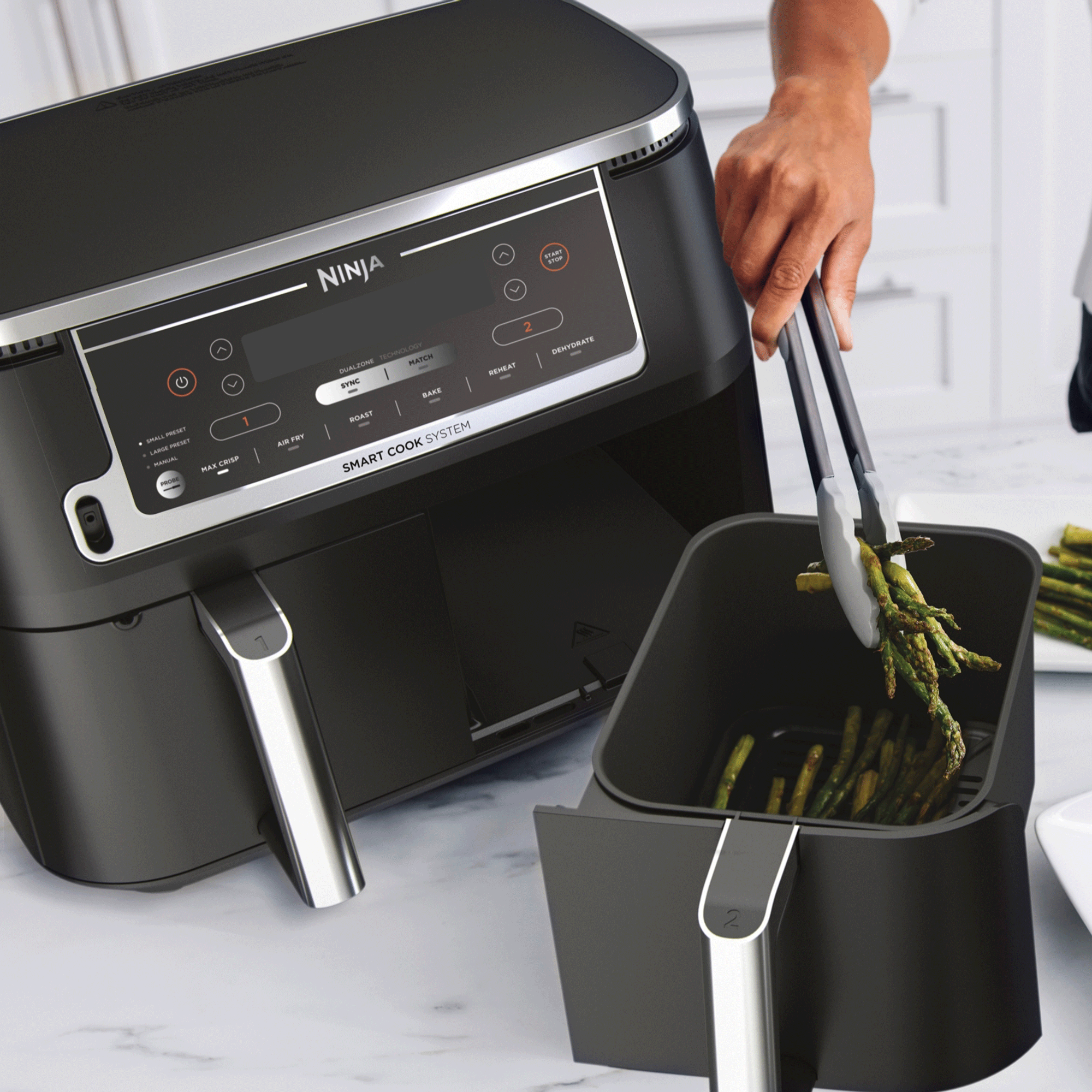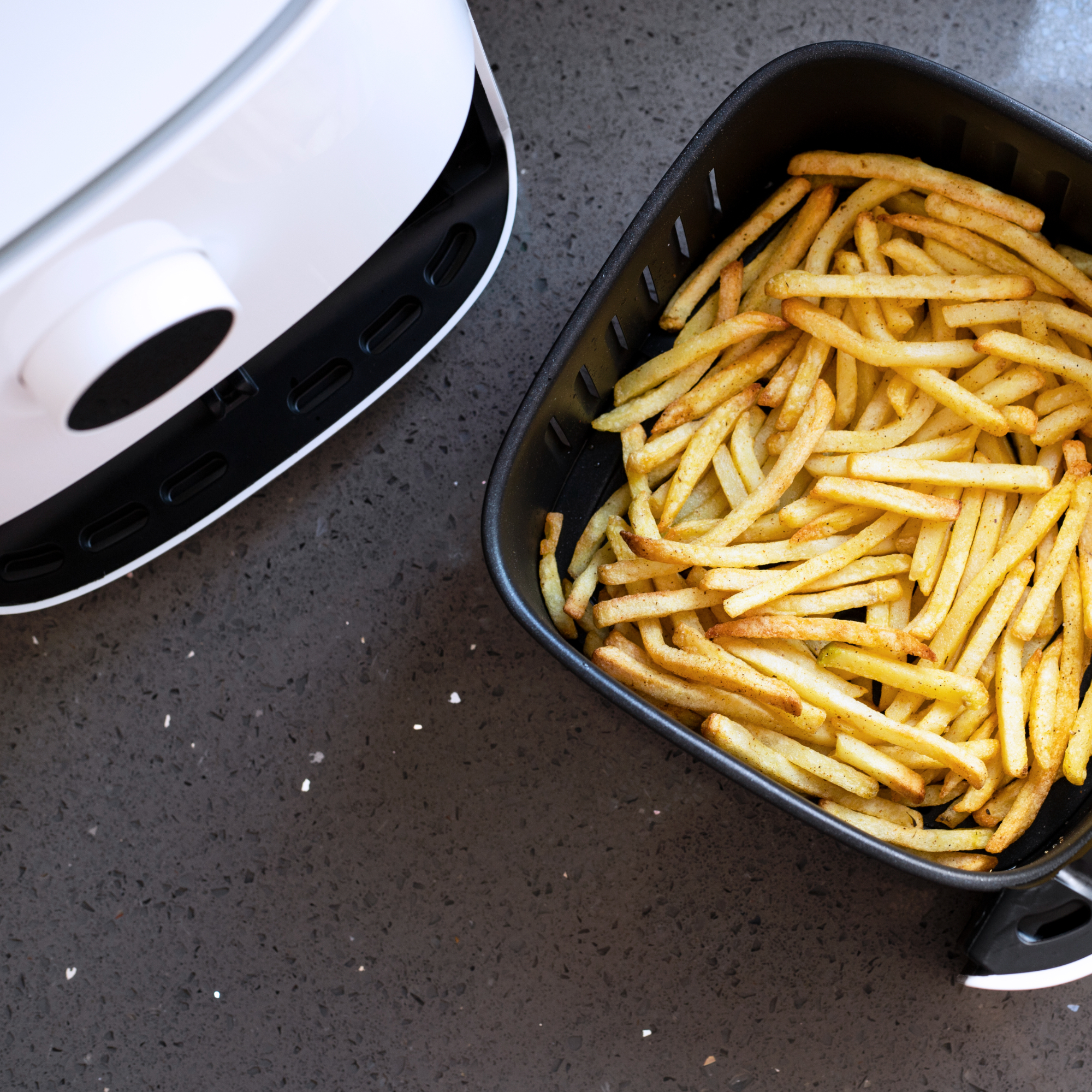
If you've recently managed to secure an air fryer for your kitchen and you're trying to find a spot to use it, you might be wondering whether an air fryer needs ventilation so you can work that into your storage plans.
The thing you always need to remember is that the best air fryers are essentially just mini-ovens. When in use, air fryers tend to generate a lot of hot air and heat – and as with any appliance of that sort, it's a given that adequate ventilation is a necessity.
Therefore, it's important to keep air fryer ventilation in mind when considering kitchen appliance layouts to avoid falling victim to this common air fryer mistake and protect your investment for longer.

Does an air fryer need ventilation?
In short, yes, air fryers do need ventilation. This is because air fryers have a fan and vents at the back of the appliance that emits very hot air.
'Air fryers generate a lot of hot air and heat and will require space and ventilation to be used properly,' begins Thea Whyte, air fryer expert at AO.com.
'While they are generally considered safer and produce less cooking-related emissions than traditional deep dryers, they still generate heat and steam during the cooking process,' adds Dennis Digwa, appliance expert at RGBDirect.
Therefore, you must always ensure there is sufficient airflow to your air fryer otherwise you could end up having to prematurely replace your beloved appliance.

Reasons why an air fryer needs ventilation
Proper ventilation for your air fryer is essential for a few reasons:
- Steam and moisture – 'Air fryers produce steam as they cook, especially when cooking items with higher water content,' explains Dennis. 'Without proper ventilation, this moisture could accumulate and affect the cooking process or the appliance itself.'
- Heat dissipation – 'Air fryers generate heat to cook food, and proper ventilation helps dissipate this heat, preventing the appliance from overheating,' says Dennis. 'It also helps maintain a consistent cooking temperature.'
- Odour control – 'While air fryers are generally efficient at containing cooking odours, having proper ventilation can help remove any lingering smells from the cooking area.'

How to ensure ventilation to your air fryer
Luckily, ensuring proper ventilation to your air fryer isn't a difficult feat, but rather very easy to achieve – and this can be applied to any air fryer model, whether it be the best dual-zone air fryers to air fryer countertop ovens.
'When using an air fryer on your kitchen countertop, just make sure you're pulling the air fryer forward so it's not right against the plug socket,' advises Eleanor Bell, product manager at Tefal.
Purchasing castor wheels for your appliances, for example, can assist in helping you glide your air fryer in and out of place easily to ensure you always have sufficient ventilation and you can avoid worktop scratches, too.
Ian Palmer-Smith, appliance expert at Domestic & General suggests implementing the '5-inch rule' when keeping your air fryer against a wall. That means either finding a permanent spot for your air fryer 5 inches from a wall, or being sure to pull it out by this distance each time you use it.

FAQs
Is an air fryer a fan oven?
In a way, yes. Air fryers are similar to ovens as they both circulate hot air to cook your food but are generally a lot faster and more efficient than an oven, which is what will typically crown air fryers the winner in the big air fryer vs oven debate.
As well as giving sufficient airflow to your air fryer, Thea adds that 'it may also be a good idea to pop your extractor fan on in your kitchen to help clear any smoke or steam from cooking.'
When in doubt, 'the user handbook that comes with your particular model of air fryer will have instructions on how to maintain safe and efficient operation through appropriate ventilation,' concludes Dennis.







